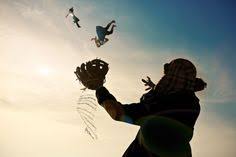
An important component in our challenge to understand what J.D. Salinger conveys to the reader is his development of symbolism. Salinger’s incorporation of symbolism in order to advance Holden’s conflict is masterful. Reacting to the novel without considering Salinger’s symbolism is like examining a portrait if you are colorblind. This assignment requires you to search for symbols and their meaning.
Make a list of the significant themes (lessons observed) that appear to you as you read the novel. For example “loss of innocence”. After you have determined at least three themes explain how you feel there is evidence to justify those three themes from the reading. You are next to list as many symbols from the reading as you feel you discover. An example here would be Allie’s baseball mitt with the poems written in green ink. Explain what you feel each symbol represents.
You are to submit your response to Turnitin.
How to find symbolism in literature:
Humor columnist Dave Barry says that college students who major in English are likely to say that Moby Dick is really the Republic of Ireland. He refers to this sort of insight as a lunatic interpretation, or symbol hunting gone awry. The ability to discover intended symbolism in a piece of literature ultimately expands the scope and importance of that literature. Symbolism is the author’s way of illustrating a situation, either in the story or in the world, and understanding the symbols allows the reader to appreciate and identify with the text. Here are some steps to help you identify symbolism.
1) Take notes. Keep track of objects, characters, and ideas. This is the only way to ensure you can connect the description of Holden’s concern with the ducks in the park in one chapter with his curiosity about what happens to the fish in the pond in the winter in another chapter.
2) Learn what a symbol is. According to most definitions, a symbol is an object/person/idea that represents another idea through association or resemblance. Consider these examples:
- The U.S. flag represents freedom. This is because the United States, with its Bill of Rights, is associated with freedom, and the flag is the emblem of the country.
- The sunrise has become a symbol of rebirth or new beginning. This is a symbol of resemblance: the sunrise starts a new day and thus can represent the larger idea of new beginnings.
3) Look for detailed descriptions. When reading, pay attention to any items, locations, or people that are described with extended details. The author often is using these descriptions as big neon signs! Make note of an object’s details. For example, if a flower is being described, what is the color, type, or size? Keep this list of details and look for anything else in the reading that seems to resemble the list. Pay particular attention to, especially when reading Salinger to colors, weather, and nature.
4) Look for “big idea” names. These are names that may or may not be conventional names. For example, it could be something that is obviously representational, such as “Young Goodman Brown.” This name alerts readers to the fact that the character is a symbol of youth and goodness. The name can also be a bit trickier, though. Consider the character “Godfrey St. Peter” from Willa Cather’s The Professor’s House. It is a seemingly conventional name, but “St. Peter” could be interpreted as a symbol of the heavenly figure. In that case, the first name—pronounced “God-free”—becomes part of a highly symbolic idea.
5) Look for repetition. If the author repeats the object or idea, then there is significance to it. In Macbeth, Shakespeare uses rhyme repeatedly. However, a careful reader will notice that the rhyme always accompanies some discussion of evil deeds.
